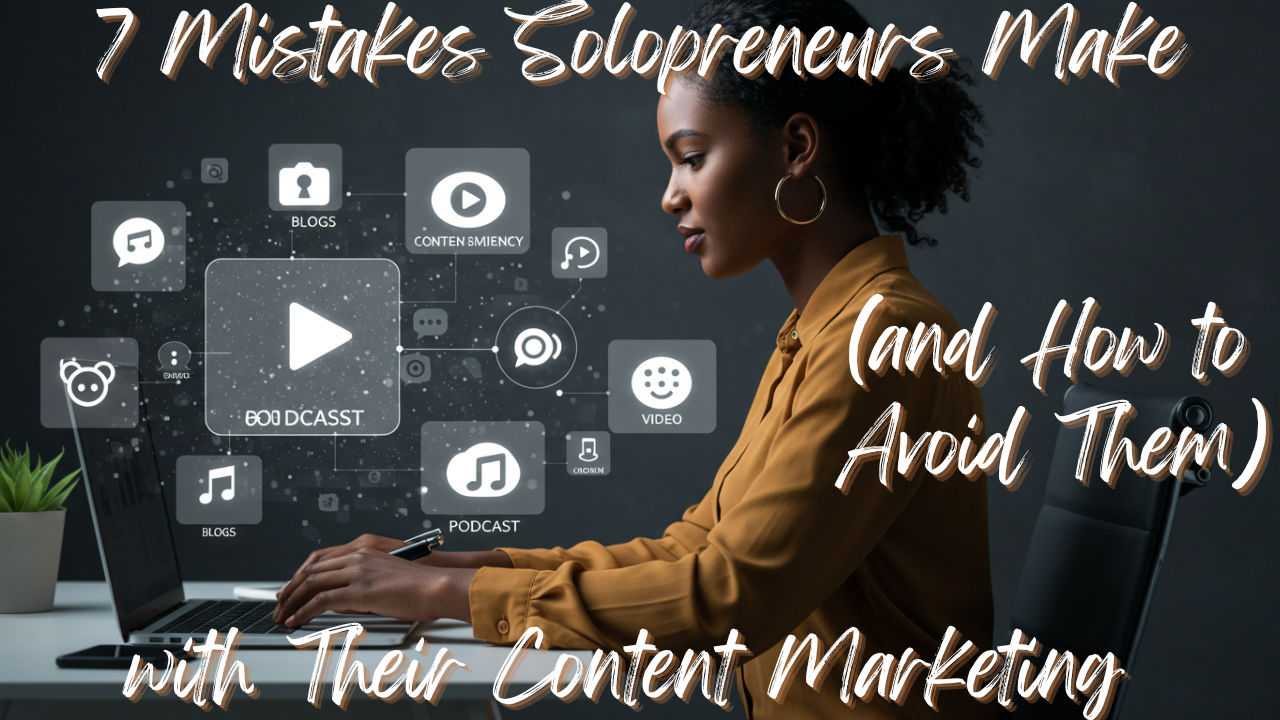Many small businesses dive into content creation with high hopes, only to find themselves spinning their wheels without results. Their content marketing fails not for lack of effort, but because of easily avoidable mistakes.
You’re not alone in this struggle. Solopreneurs everywhere face the same content marketing pitfalls, but once you know what they are, you can sidestep them completely.
Let’s go over the 7 most common content marketing mistakes that sabotage your success, and exactly how to avoid them.
Contents
- Mistake #1: Publishing Content Without Planning or Clear Business Goals
- Mistake #2: Trying to Be Everywhere Instead of Choosing Strategic Platforms
- Mistake #3: Creating Content Your Audience Doesn't Want
- Mistake #4: Publishing on an Inconsistent Schedule
- Mistake #5: Not Doing SEO or Keyword Research Before Content Creation
- Mistake #6: Producing Too Much Pushy Content
- Mistake #7: Obsessing Over Metrics That Don’t Drive Business Results
- Wrap Up
Mistake #1: Publishing Content Without Planning or Clear Business Goals

When you’re running a one-person business, time is your most precious (and limited) resource. Yet many solopreneurs jump straight into content creation without a strategic plan, wasting countless hours on content that doesn’t move the needle. This scattershot approach is the fastest way to burn out without getting good results in return.
Don’t post without a purpose

Content without clear goals becomes “pseudo content”–material that looks like marketing, but fails to serve any real business purpose. Publishing blog posts and engaging social media updates means nothing if they’re not aligned with your business goals.
Signs your content strategy lacks direction include:
- Creating content based only on what interests you
- Publishing sporadically without considering timing or frequency
- Focusing on vanity metrics instead of meaningful business outcomes
The hidden cost of directionless content runs deeper than wasted time. When your content lacks strategic focus, you confuse your audience about what you actually do. Potential clients can’t see the connection between your expertise and their problems, which doesn’t motivate them to take the next step toward working with you.
Align your content with what your audience needs
Before you create content, answer these questions:
- What specific business goal does this serve?
- Who exactly am I trying to reach?
- What action do I want them to take after consuming this content?
Without clear answers to these, you’re not doing content marketing–you’re just making more noise in an already-noisy online world.
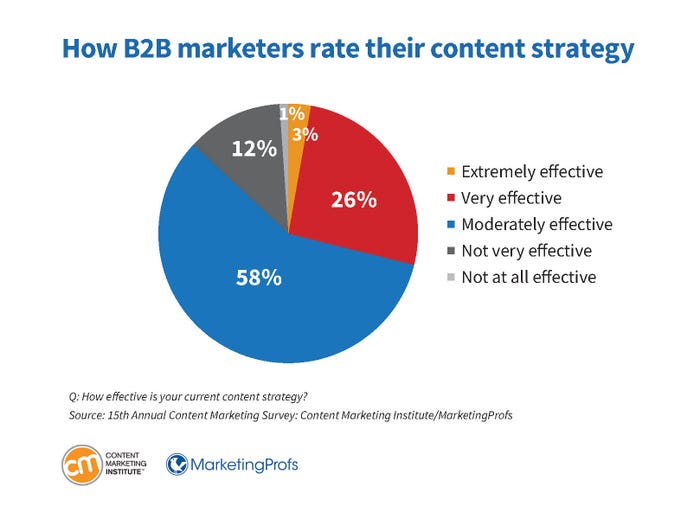
In 2025, 87% of B2B companies with documented content strategies were more successful than those without. This data is even more important for solopreneurs like you and me, who can’t afford to waste resources.
Change random content into strategic assets by aligning every piece of content with your customer’s journey. Map your content to specific stages (awareness, consideration, and decision), ensuring each piece serves a clear purpose in moving prospects closer to hiring you.
Mistake #2: Trying to Be Everywhere Instead of Choosing Strategic Platforms

The biggest trap solopreneurs fall into is platform overload.
Platform overload symptoms include:
- Posting the same content across all channels without customization
- Struggling to keep up with posting schedules
- Seeing declining engagement as you add more platforms to your mix9
Each platform has its own culture, optimal posting times, and content preferences. Ignoring these nuances ensures your content gets lost in the noise.
Doing “all the things” will wear you out
You don’t need to maintain an active presence across every social media channel to succeed. That shotgun approach dilutes your message and exhausts your limited resources, leaving you burned out with mediocre results everywhere instead of excellent results somewhere.
When you spread yourself thin across multiple platforms, each one receives a fraction of your attention. The quality of your content suffers, your posting becomes inconsistent, and you never build the momentum needed to establish authority on any single platform. It’s like trying to dig a bunch of shallow holes instead of one deep well. All that effort backfires.
Prioritize quality over quantity

Research shows that focusing on 1 to 2 platforms where your audience actually spends time produces better engagement and conversions than maintaining a weak presence across 5 to 6 platforms.
For most solopreneurs, this means 1 to 2 primary platforms with occasional cross-posting to 1 to 2 secondary channels.
For consultants and coaches, this often means prioritizing LinkedIn, where 70% of CEOs maintain active profiles.
Quality beats quantity every time.
Choose the right platforms for success
The platform selection process should start with audience research, not platform popularity. Your ideal clients may not be scrolling TikTok during their lunch break–they could be reading industry publications or chatting in professional forums.
A strategic approach involves choosing platforms based on:
- Where your ideal clients spend their professional time
- Which formats allow you to best showcase your expertise
- Which platforms you can realistically and consistently maintain with high-quality content
Building authority on one platform is WAY more valuable than being mediocre on many. When potential clients see that you consistently deliver value in their preferred space, they will associate you with expertise in your field.
Mistake #3: Creating Content Your Audience Doesn’t Want

The most expensive mistake solopreneurs make is creating content based on assumptions rather than audience insights. The gap between what you think provides value and what your audience actually wants can kill your content marketing efforts before they gain traction.
You may love discussing industry trends or sharing behind-the-scenes glimpses of your work process, but if your audience is looking for practical solutions to specific problems, your content will fall flat.
Create content that serves your audience (not you)

Most solopreneurs assume their personal interests align with business strategy, leading to content that fails to address real pain points or advance the customer journey. This self-serving approach may satisfy your creative urges, but it won’t generate leads or sales.
The disconnect between creator/business owner interests and audience needs is pretty common. Uberflip’s research revealed that marketers consistently overestimate their content’s effectiveness compared to how buyers actually rate it.
The answer lies in doing systematic audience research before you create content.
Research your audience’s needs and desires

You need data to evaluate which topics truly matter to your market. Here’s how to get it:
- Survey your existing clients about their biggest challenges
- Monitor industry forums where your target audience discusses problems
- Analyze which of your past content pieces generated the most meaningful engagement.
Using client interviews, one consultant discovered that while she was creating content about general business strategy, her audience desperately wanted tactical advice about managing remote teams. When she shifted her content focus accordingly, her email list grew by 300% in 6 months!
To discover your audience’s preferences, use:
- Customer surveys using platforms like Typeform
- Social media listening to understand conversations around industry topics
- Analytics reviews to identify which existing content drives the most conversions (not just traffic)
Validate your content ideas
Content validation becomes crucial before investing time in creation. Test content ideas through polls, direct messages, or small email segments before producing full pieces. For instance, if your LinkedIn post gets strong engagement, you may want to create a blog article or video series on that topic.
The most successful solopreneurs create content that showcases their expertise while solving immediate problems for their audience. This helps to build trust with your audience, and positions you as the obvious choice when they’re ready to hire help.
Mistake #4: Publishing on an Inconsistent Schedule
Sporadic posting destroys your momentum

The stop-and-start content cycle is a momentum killer that undermines everything you’re trying to build. Posting 5 times in one week, and then disappearing for a month sends a message that you’re unreliable.
It’s exactly the opposite of what potential clients want to see from someone they may hire.
Inconsistent publishing habits hurt you in other ways too:
- Search engines favor websites with regular content updates, meaning sporadic posting limits your organic visibility.
- Your audience can easily forget about you during those gaps, requiring you to rebuild awareness every time you return to publishing.
Sporadic content creation could be a sign of perfectionism or a lack of systems in your business. Waiting for the “perfect” post or video idea means missing dozens of opportunities to stay connected with your audience. Meanwhile, competitors with consistent but imperfect content gain market share.
Set up a content creation schedule

To help you create and maintain content consistently, set up a content calendar with a realistic publishing schedule to batch your content creation.
Instead of creating content day-by-day, dedicate specific time blocks to producing multiple pieces at once. This approach maintains creative flow while building a content buffer for busy periods.
Batch your content
A practical batching system may involve spending 4 hours every Sunday creating the following week’s content: writing 2 blog posts, filming 3 short videos, and designing social media graphics.
This front-loaded approach prevents the daily scramble to create something new while maintaining consistent audience touchpoints.
Repurpose your content
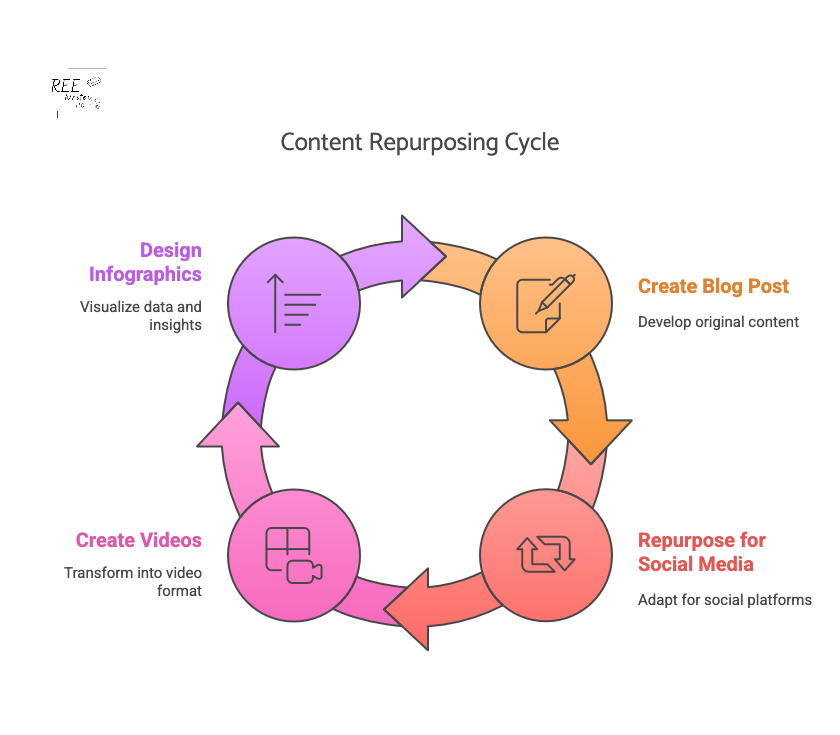
Smart solopreneurs also repurpose content to maintain consistency without constant creation. One well-researched blog post can become a video, multiple social media posts, a newsletter segment, and a podcast episode. This maintains your publishing frequency and maximizes the value of each piece of original content you’ve made.
The key is setting expectations you can realistically meet long-term. Publishing twice weekly consistently is better than publishing daily for 3 weeks, and then disappearing for 2 months. Your audience would rather know they’ll hear from you every Tuesday and Friday than wonder when you’ll show up next.
Mistake #5: Not Doing SEO or Keyword Research Before Content Creation
Many solopreneurs treat SEO as either too technical to attempt or unnecessary for their small-scale operations. But this mindset costs them countless opportunities to be discovered by ideal clients actively searching for their expertise.
Ignoring SEO limits your reach

You don’t need to be an SEO expert, but ignoring basic SEO principles will severely limit your content’s reach. A successful content strategy must include keyword research.
The most common SEO mistakes are:
- Skipping keyword research entirely
- Stuffing keywords unnaturally into content
- Neglecting on-page optimization elements like meta descriptions and header tags.
These oversights mean your carefully crafted content remains invisible to people specifically looking for solutions you provide.
Do keyword research using local and on-page SEO
Keyword research doesn’t require expensive tools or technical expertise. The goal is to find and use specific, relevant phrases your ideal clients actually use in your content.
Local SEO presents opportunities for businesses who serve specific geographic areas or industries. For example, optimizing for phrases like “marketing consultant for nonprofits” or “executive coach in Austin” can dramatically improve your visibility for qualified prospects.
These longer, more specific search terms often have less competition and higher intent.
On-page SEO is fairly easy, and makes a huge difference in search performance:
- Include your target keyword in the title, first paragraph, and one or two header tags throughout your content.
- Write compelling meta descriptions that encourage clicks, and ensure your website loads quickly on mobile devices.
Keyword research resources

Free SEO tools provide actionable insights without breaking your budget:
- Google’s Keyword Planner and Ubersuggest provide sufficient data for most solopreneurs to identify terms their target audience uses when searching for help.
- Google Search Console reveals which terms people use to find your content.
- Google Analytics shows which organic traffic converts best.
- Bing Webmaster Tools offers additional keyword research and site analysis features that many solopreneurs overlook.
Content that answers specific questions performs well in search results. Structure blog posts around problems your audience frequently asks about, using natural language that matches how people search. This approach attracts organic traffic while demonstrating your expertise to potential clients.
The effect of consistent SEO basics compounds over time. Content published today may rank poorly initially, but is likely to improve steadily as search engines recognize your topical authority if you do your SEO correctly.
This long-term visibility provides sustainable lead generation that doesn’t require ongoing advertising spend.
Mistake #6: Producing Too Much Pushy Content

Serve more than you sell
The hard sell approach backfires in content marketing. If every piece of content you publish includes a pitch, you’re training your audience to ignore your messages, or unsubscribe entirely. This promotional overload destroys the trust and authority that effective content marketing builds.
Social media users don’t log in to see ads. They want connection, entertainment, and valuable information. When your content feels like a constant sales pitch, people tune out because you’re not meeting their needs. The result is declining engagement and missed opportunities to build meaningful relationships with potential clients.
Balance value and promotional content
The 80/20 rule provides the ideal balance between value and promotion. Educational content builds stronger business relationships than promotional material.
When you consistently help people solve problems through your content, they begin to trust your expertise and see you as a valuable resource. This trust becomes the foundation for future business relationships when they need professional help.
One method you could use is to dedicate 80% of your content to educating, entertaining, or solving problems for your audience, with only 20% focused on promotion. This ratio ensures your audience receives substantial value while still learning about your services.
A study by Conductor found that consumers are 131% more likely to buy from a brand immediately after consuming educational content, and 83.6% chose the educational brand when presented with four options. This shows the power of leading with value rather than sales messages.
Showcase your expertise without being salesy
The most effective solopreneurs show their expertise with helpful and educational content, not self-promotional messages.
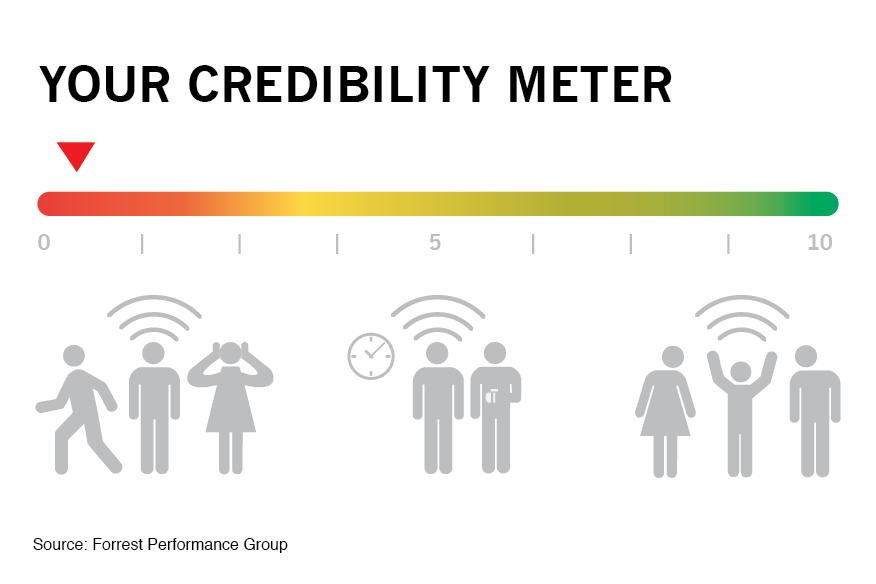
Content types that build trust include:
- Step-by-step tutorials that solve common problems
- Case studies showing real results without heavy promotion
- Industry insights that help your audience make better decisions
- Behind-the-scenes content that humanizes your expertise
Be sure to:
- Share your methodologies with clients
- Explain complex concepts in simple terms
- Give actionable advice that people can implement immediately
This approach positions you as the obvious choice when they need professional guidance.
People need multiple touchpoints before making buying decisions. Content that serves them creates those positive touchpoints, building the relationship equity that eventually converts into clients. Every helpful blog or video becomes a deposit in your trust account with potential customers.
Mistake #7: Obsessing Over Metrics That Don’t Drive Business Results

Measure your business impact, not vanity metrics
Likes, shares, and follower counts may provide an ego boost and make you feel good, but they don’t pay your bills or indicate whether your content marketing is working.
Vanity metrics are easy to track, but create a false sense of success. You may celebrate a blog post that received thousands of views while ignoring that it generated zero email subscribers or consultation requests. This focus on surface-level metrics prevents you from optimizing for outcomes that actually matter.
Focus on metrics that affect your bottom line and ROI

Meaningful metrics directly connect to business objectives. The most important content marketing metrics for solopreneurs include:
- email subscriber growth rate
- consultation or discovery call bookings
- qualified lead generation
- revenue attributed to content marketing efforts
These indicators reveal whether your content is moving prospects through your business funnel.
Instead of tracking total followers, measure how many followers convert into email subscribers, consultation requests or inquiries. Rather than celebrating blog traffic, analyze which posts generate the most qualified leads and then repeat those topics and formats.
Track conversions and ROI
Set up goals in Google Analytics to monitor when website visitors complete actions like downloading resources, booking calls, or requesting proposals. This data shows which content pieces contribute to your bottom line versus those that merely entertain.
Your prospects will likely consume multiple pieces of content before hiring you, so track the entire customer journey—not single touchpoints.
To calculate the ROI of content marketing, compare the revenue generated from content-driven leads against your total content creation and distribution costs. If you spend $500 monthly on content creation and it generates $3,000 in new business, your 600% ROI justifies the investment and suggests scaling your efforts.
When to pivot your content strategy
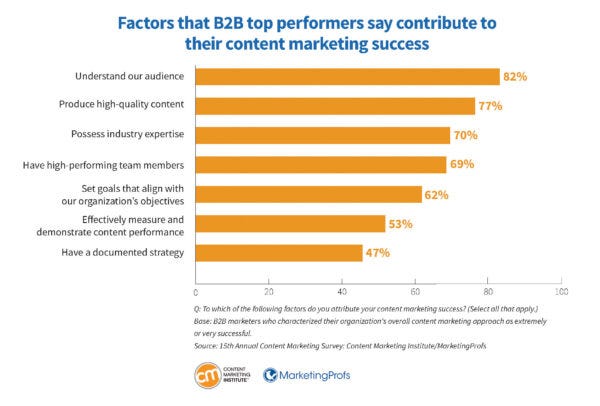
The most successful solopreneurs regularly audit their content performance to identify patterns in what drives business results. They double down on formats, topics, and distribution channels that generate clients while eliminating or reducing efforts that only produce vanity metrics.
When you shift from vanity metrics to business impact measurements, your entire content strategy becomes more focused and effective. Every piece of content gets evaluated based on its contribution to your actual business goals rather than its ability to generate social media engagement.
Wrap Up
Be sure your content is strategic, consistent, and focused on serving your audience. Avoid these common pitfalls, and you’ll be ahead of the solopreneurs who give up too soon. Small improvements compound over time.
Ready to turn your content around? Pick a mistake from this list and commit to fixing it this week. Your future customers are waiting for the value you provide.
References
7 SEO Mistakes Local Businesses Are Making in 2024. (2024). Explore Digital. Retrieved from https://www.exploredigital.com/blog/7-seo-mistakes-local-businesses-are-making/
Cisco, P. (2015). Educational Content Wins Over Promotional Every Time. Marketing Essentials. Retrieved from https://mktgessentials.com/blog/educational-content-wins-over-promotional-every-time/
Edouard, N. (2022). Educational Content Makes Consumers 131% More Likely to Buy. Conductor. Retrieved from https://www.conductor.com/academy/winning-customers-educational-content/
Foo, S. (2020). 21 Content Marketing Metrics to Track for Maximum ROI. SpeechSilver. Retrieved from https://speechsilver.com/content-marketing-metrics/
Isaacs, L. (2024). Stop counting likes, start measuring results: Vanity metrics vs. actionable metrics. Tallwave. Retrieved from https://tallwave.com/blog/actionable-metrics-vs-vanity-metrics/
Murton Beets, L. (2024). 57+ Content Marketing Statistics to Help You Succeed in 2025. Content Marketing institute. Retrieved from https://contentmarketinginstitute.com/content-marketing-strategy/content-marketing-statistics
Qureshi, A. (2024). Mastering Audience Identification for Small Businesses. Small Business Association of Michigan (SBAM). Retrieved from https://www.sbam.org/mastering-audience-identification-for-small-businesses/
Pineda, D. (2022). 3 Mistakes Solopreneurs Make When Trying to Position Themselves. Medium. Retrieved from https://medium.com/better-marketing/3-mistakes-solopreneurs-make-when-trying-to-position-themselves-8aade1463769
Reynolds, J. (2025). CEOs on Social Media: A Guide to Doing It Right. The Helm. Retrieved from https://csuitecontent.com/ceos-and-social-media-a-guide-to-doing-it-right/
Unlocking B2B Buyer Engagement: The Experience Disconnect Report. (2021). Uberflip. Retrieved from https://hub.uberflip.com/ebook/unlocking-b2b-buyer-engagement-the-experience-disconnect-report
What is Educational Content Marketing? (n.d.). The New York Times Licensing. Retrieved from https://nytlicensing.com/latest/marketing/why-educational-content-strategy-so-valuable/

